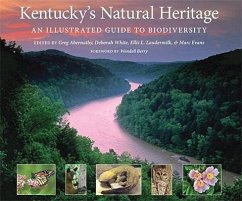Although any nature lover walking through one of the Kentucky's more than fifty nature reserves can observe the diverse population of flora and fauna, few truly understand the importance of the biological, geographical, and cultural history of Kentucky in the context of biodiversity. Kentucky's Natural Heritage provides an essential illustrated reference to Kentucky's remarkable natural history, while emphasizing the importance of conserving the unique biological environment to which the Commonwealth is home. From the Mississippi Piedmont rivers to the Appalachian mesophytic forests, the state hosts a vast range of ecosystems that have been internationally recognized for their biodiversity. Kentucky is made up of three natural regions: the Coastal Plains, the Interior Low Plateaus, and the Appalachian Highlands. These three areas are drastically different from each other in climate, geology, topography, and soils; consequently, the flora and fauna found in each are often specific to that area. For example, the Orangefin Darter can be found in the Green River ecosystem -- and nowhere else in the world. The book also serves as a call to arms for conservation of the state's numerous natural communities. The authors outline the threats that could potentially destroy the biodiversity in the state, and discuss the need for and methods of conservation of the area. They also stress that ecosystems are dynamic and that the fluctuation in population of one species can drastically affect the rest of the ecological web, thus highlighting the delicate balances that exist within such environments. The preservation of these fragile systems continues to be a relatively hot-button issue since former Governor Paul E. Patton commissioned the Kentucky Biodiversity Task Force in an effort to sustain biodiversity in the state. Kentucky's Natural Heritage was spearheaded by a team from the Kentucky State Nature Preserves Commission and consists of entries written by over fifteen of the state's most noted naturalists. Complete with maps, charts, and nearly 200 photos, this book will please both the academic reader and anyone interested in the state's natural heritage. It is the first book to describe holistically the connections between the environment, the landscape, the flora, and the fauna of Kentucky in a time when such connections are in danger of being broken forever.








